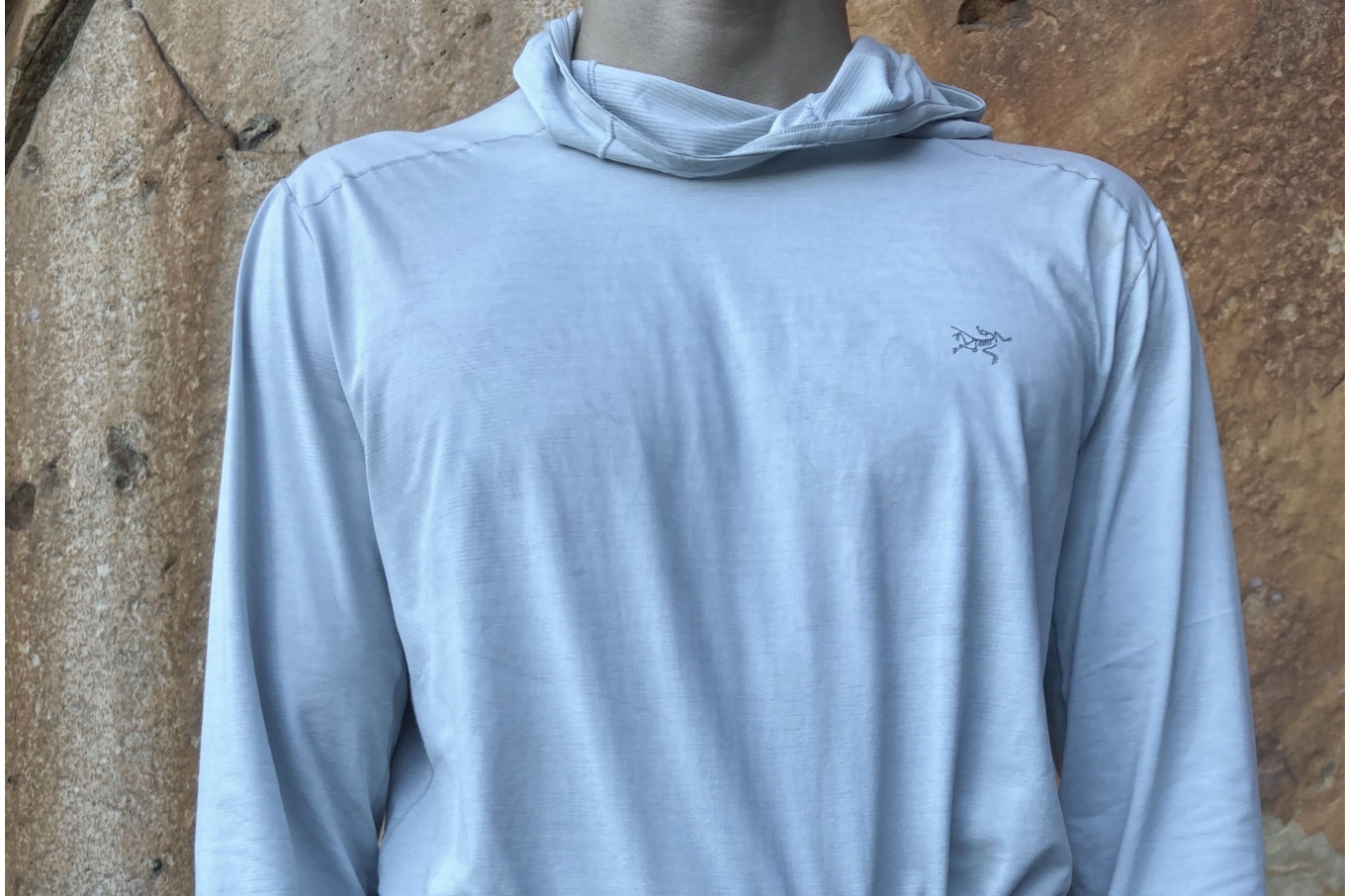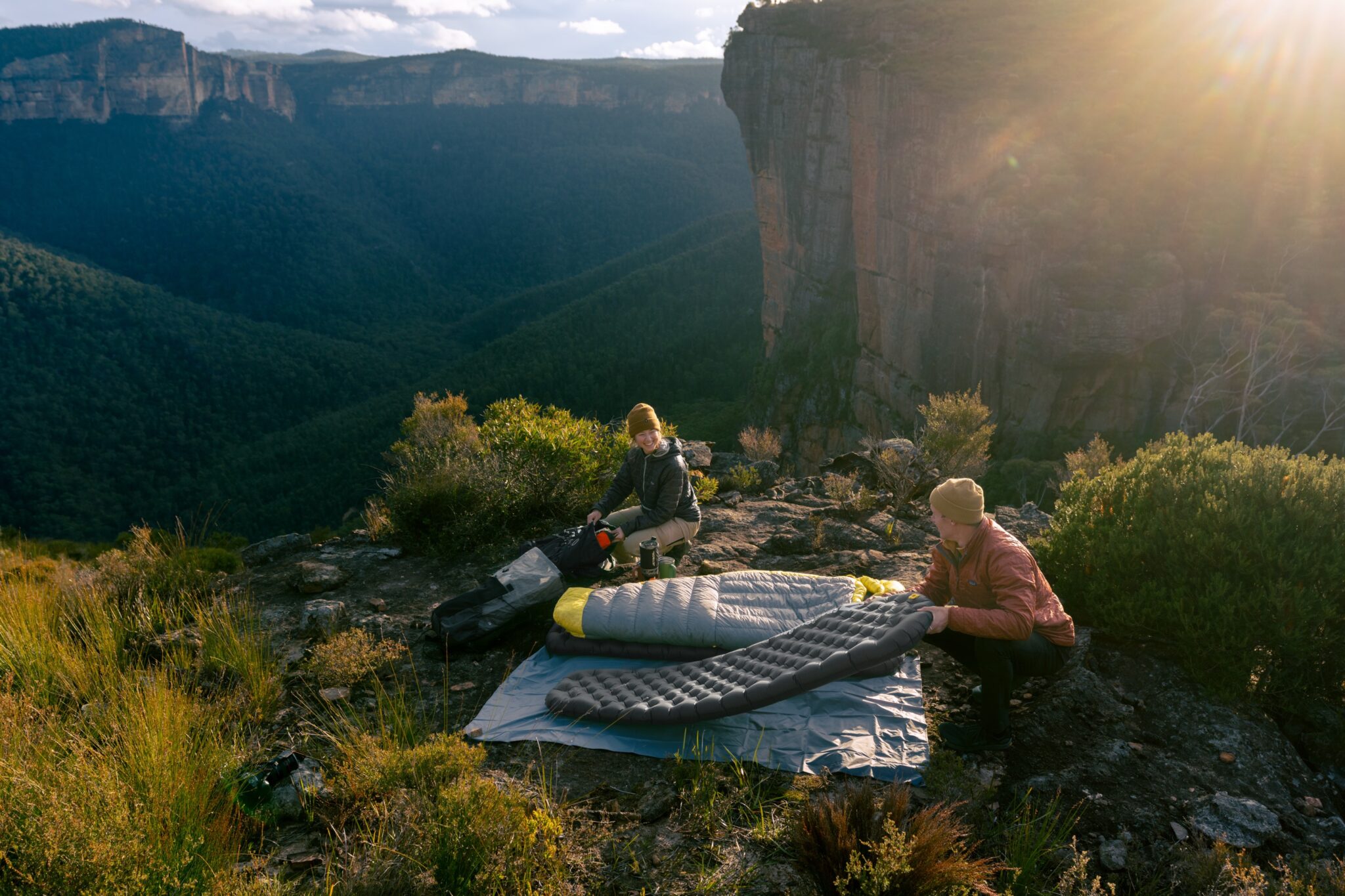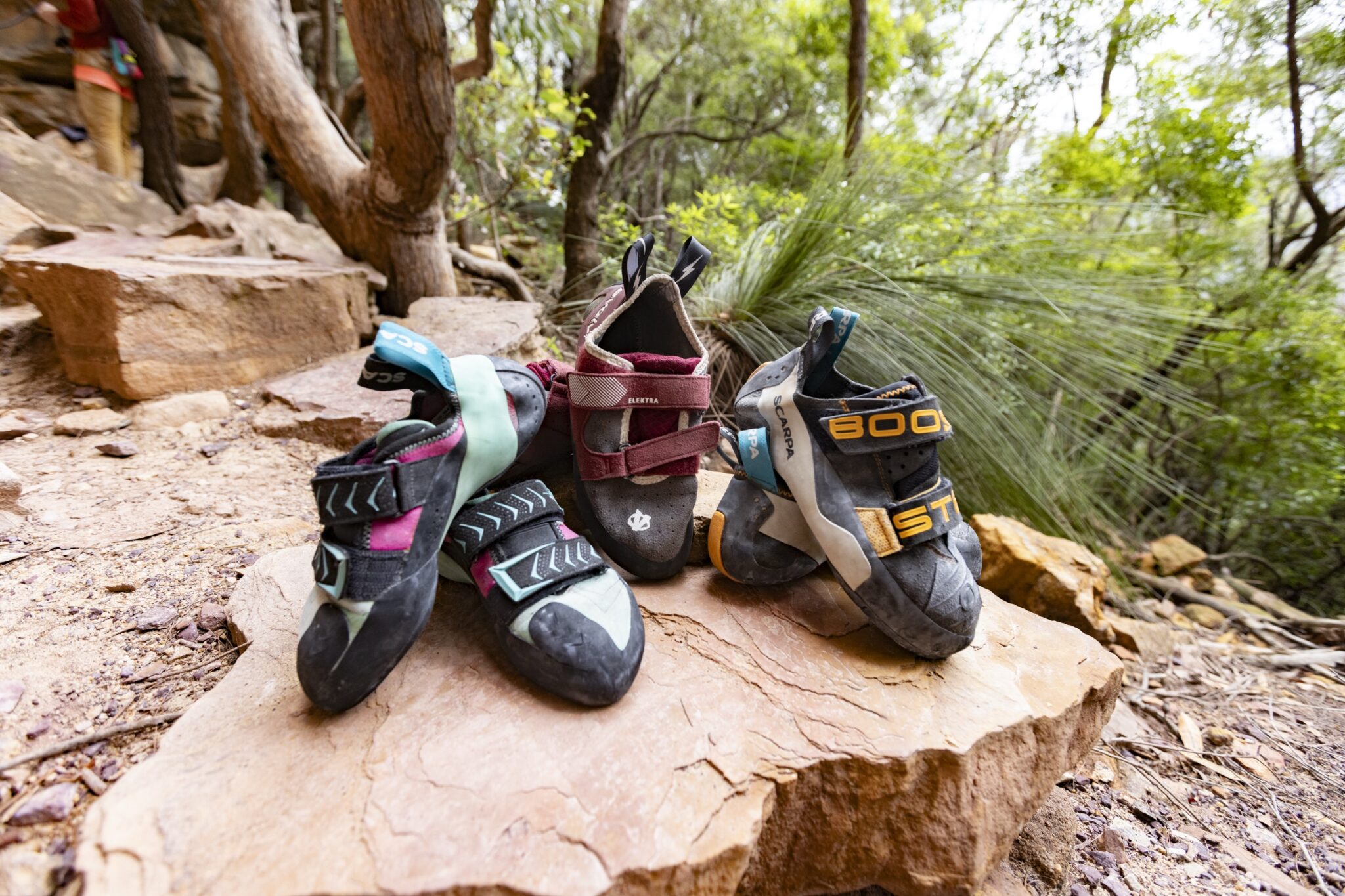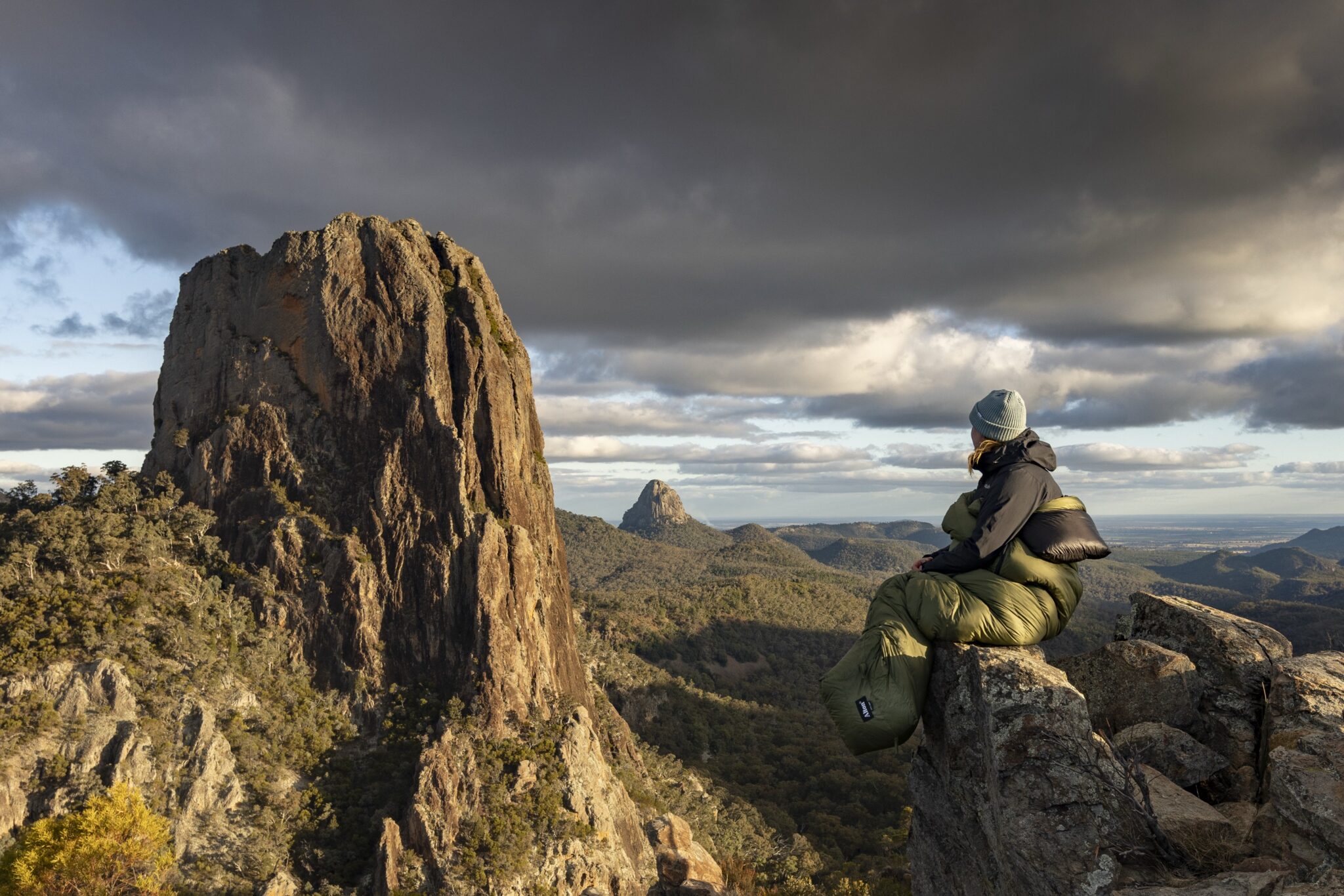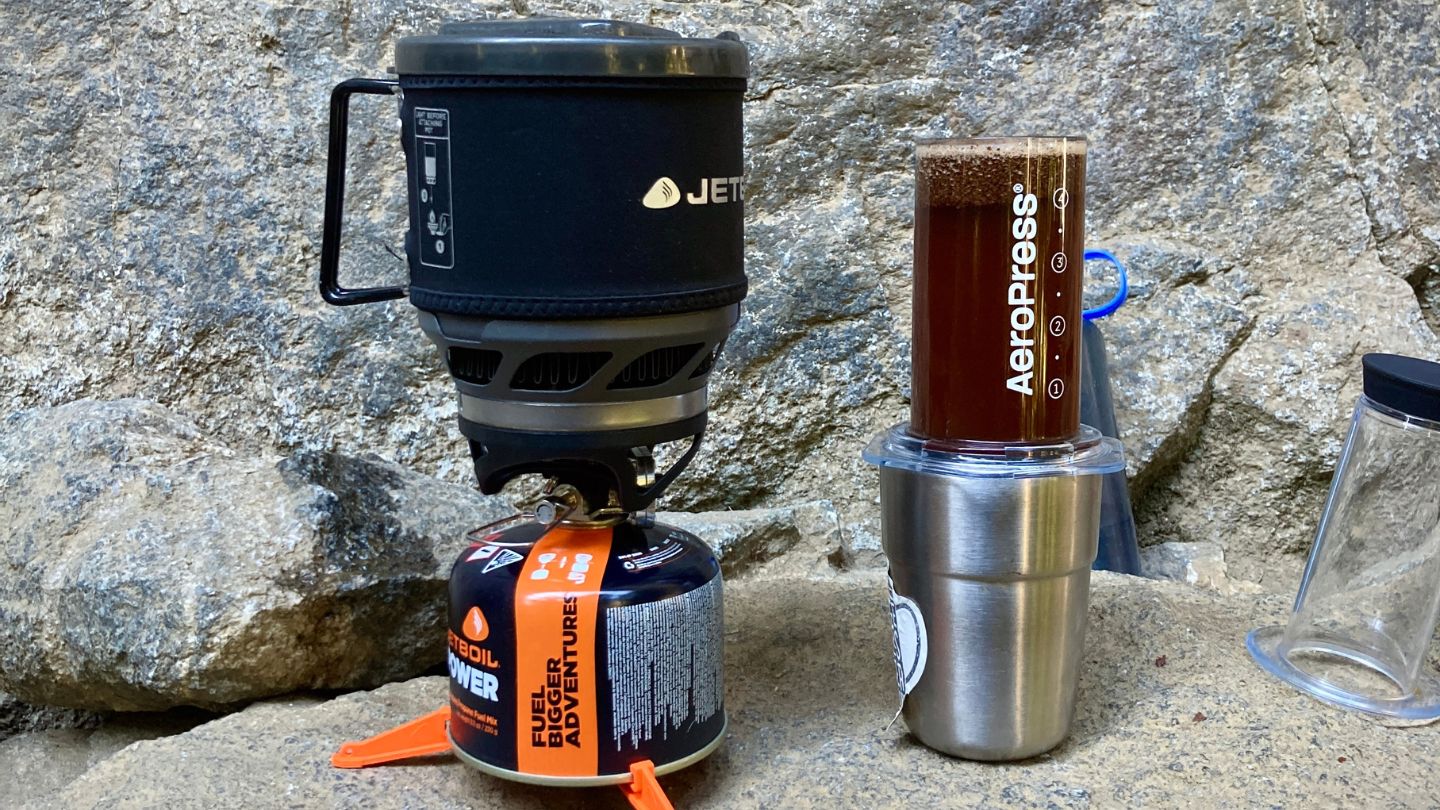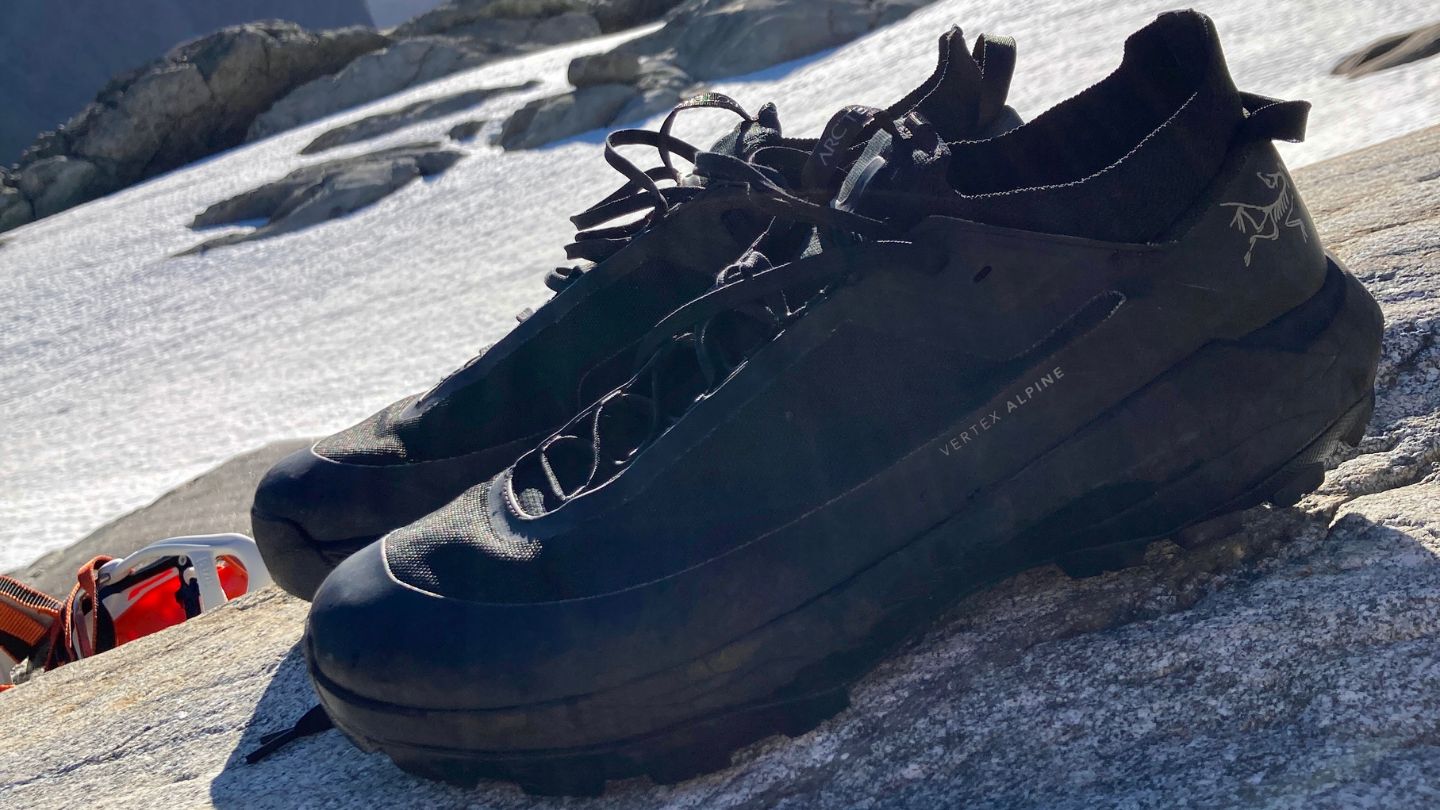Field tested: Arc'teryx Cormac Hoody
(This review originally featured in Vertical Life #46)
Reviewer: Sule McCraies
When it comes to sun hoodies, the Arc’teryx Cormac Hoody is best described as a jack of all trades, master of none. Out of the six sun hoodies I own (I’m an addict), it doesn’t beat them at any particular trait, but it performs high enough in almost all of them that it’s often the one I grab.
Arc’teryx Cormac Hoody Fit
My pet peeves when it comes to climbing tops are sleeves that are too short and hems that untuck from my harness; thankfully, the Cormac suffered from neither of these flaws. I found the Cormac to run a bit on the larger side (size L) with a more “flowy” cut, this combined with the “Atmos Heather” colour made me feel a bit like Timothée Chalamet in *Dune*. This felt very different from my BD Alpenglow Pro, which opts for more of a snug and stretchy approach to sizing. While the Cormac material is somewhat stretchy, it’s on the lesser side compared to other sun hoodies (not a negative, just worth noting for comparison). The sleeves feature thumb holes, which add a few extra centimetres in length for lanky climbers like myself. In terms of comfort, the Cormac scores highly, especially the flatlock-esque seams which do a good job of going unnoticed when wearing a pack.
Function:
The best-performing sun hoody I’ve worn to date (for moisture management) was made from Polartec Power Dry®, which did a tremendous job of wicking moisture away from my skin and somehow always managed to feel dry—even when it was wet.
The Arc’teryx Cormac Hoody has a similar ability to feel ‘dry’ as moisture builds, scoring high for moisture management—unsurprising given it’s mostly polyester. This ‘dry’ sensation also means the Cormac doesn’t do the best job of cooling the wearer compared to a more damp-feeling fabric like the BD Alpenglow Pro. I found myself much happier wearing the Cormac in hot and windy conditions compared to hot and still. This makes sense given the Phasic LT material, which feels ‘middle of the pack’ when it comes to breathability/air-permeability. This is both a pro and a con, meaning you’ll sacrifice some hot weather performance for a layer that’s still useable when things get cold and gusty.
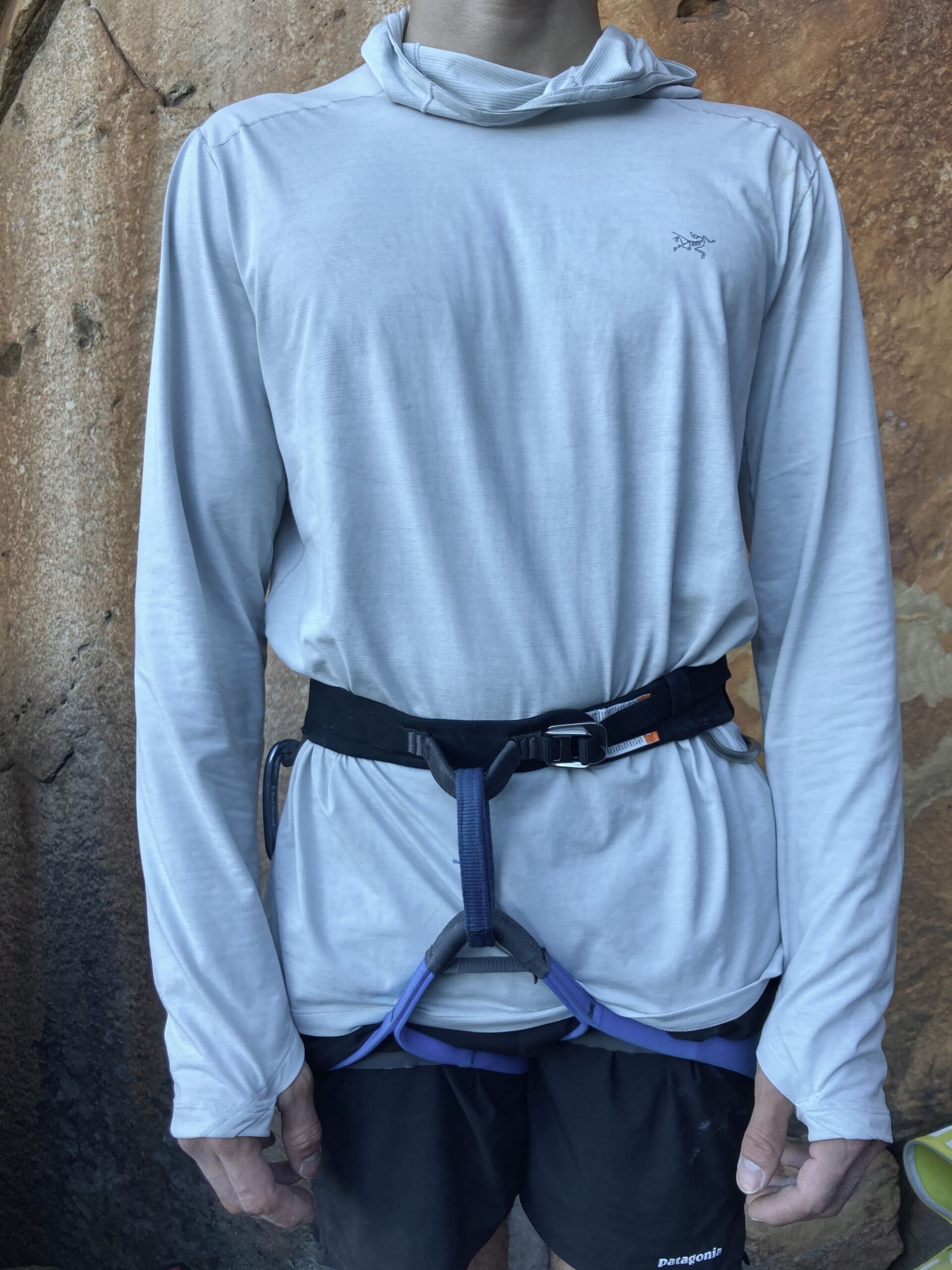
The Phasic LT material is something I really enjoy about the Cormac. In addition to feeling comfy against the skin, it’s quite light, meaning the Cormac only weighs 160g—impressive considering how durable the material itself feels. Unfortunately, the flatlock seams aren’t so durable. The way they’re stitched means the threads are a bit exposed on the outside of the hoody and tend to catch on rough surfaces like rock, pulling the threads a bit. This hasn’t been a major issue as a standalone layer while climbing, but I’d be cautious around those granite offwidths. In terms of sun protection, the Cormac is tied with the BD Alpenglow pro at UPF 50+, leaving other hoodies behind at a mere UPF 40/30/15. I’m also happy to report this sun hoody performs well when it comes to stink factor! Synthetic baselayers are never going to smell great, but some of them can smell truly awful in a relatively short amount of time. I think this is the least smelly of all my sun hoodies after a few days of use, but I’m yet to get a second opinion from a willing participant.
In terms of features, you don’t get many frills. The Arc’teryx Cormac Hoody sports a very simple design with no chest pockets, mesh armpits, quarter zippers, or integrated buffs to speak of—though the hood does have some neck coverage. The only features to speak of are the thumb holes in the sleeves and the helmet-compatible hood design, which feels nice both with and without a helmet, over and under it. At $130 I think you get enough bang for your buck, the Cormac is similarly priced (slightly cheaper) to options from Patagonia and Black Diamond, and slightly more expensive than Outdoor Research.
Arc’teryx Cormac Hoody final thoughts:
The Arc’teryx Cormac Hoody isn’t breaking new ground or looking to excel in any particular area, it’s just a well-executed design that makes for a versatile sun hoody in both warmer and cooler conditions. For those not looking to own six sun hoodies like yours truly, this would be a solid choice to cover most of your needs with one purchase.
Overall, I’d rate it 4.1 out of 5 blue offsets.
NEED TO KNOW
Pros:
Versatile
Good moisture management
Climber-friendly cut
Cons:
Stitching at seams prone to catching
Best suited for: Those wanting a versatile sun hoody with high UV resistance (UPF 50+), good moisture management, and a low stink factor to use as a standalone or base layer in a range of conditions.
RRP: $130

